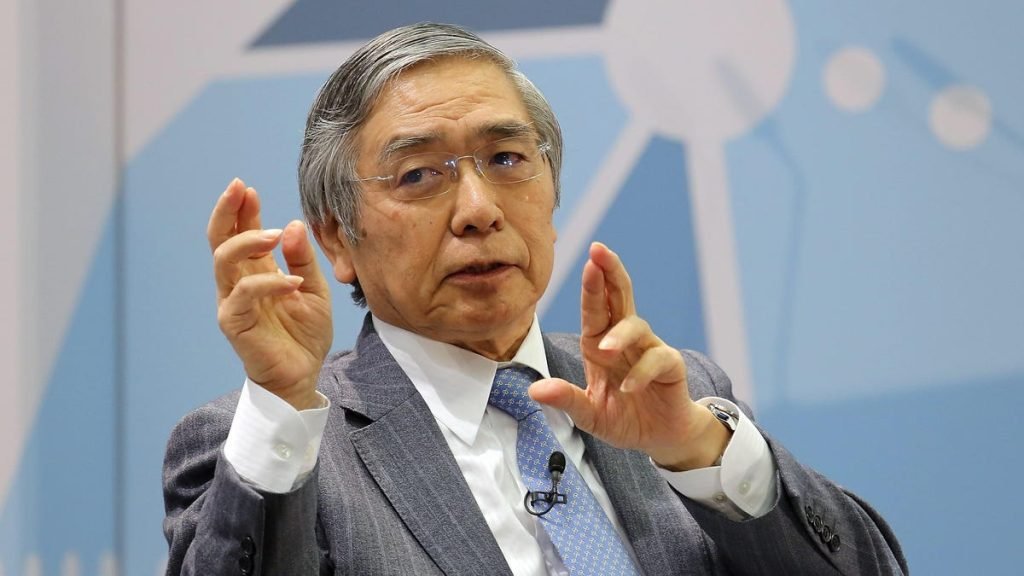
Japanese investors will likely pull more money out of the U.S. Treasury market as yields on domestic government debt are primed to rise further.
Total Treasury holdings in Japan — the largest foreign holder of U.S. Treasurys securities, ahead of China and the U.K. — fell 18.5% year over year in November to $1.082 trillion as the Federal Reserve’s aggressive rate hikes increased hedging costs for foreign investors. Rising yields on Japanese 10-year government bonds are giving investors further reason to repatriate capital after the Bank of Japan relaxed its yield curve control.
The drop-off in foreign demand comes at a time when the Federal Reserve is unwinding its own holdings of U.S. government debt in its effort to tame inflation. While U.S. government debt is still paying a premium, the prospect of further central bank action is expected to draw more Japanese money out of the Treasury market.
“If the [Bank of Japan] widens the band again in the upcoming meeting, we do expect these flows to persist,” said Nigel Foo, head of Asian fixed income at First Sentier Investors.
Japanese pullback
Yields on Japanese 10-year government bonds have climbed to 0.48% as the Bank of Japan relaxed its yield curve control. While that is much lower than the 3.39% yield on offer from U.S. 10-year Treasurys, Japanese bonds are now more attractive on a hedged basis and will become more so if the central bank scraps its yield curve control measures completely.
U.S. bonds were attractive to Japanese investors for years owing to the low cost of borrowing dollars on short-term rates and the significantly higher yield on offer for longer-dated U.S. debt compared to the returns that could be achieved in Japan.
Aiming to stimulate inflation and economic growth, the Bank of Japan instigated a yield curve control policy in September 2016 to keep the yield on 10-year Japanese government bonds at 0.0%. The offer of higher yields abroad resulted in Japanese capital flooding into international markets.
Sustained inflation pushed the Bank of Japan to relax its yield curve control policy on Dec. 20, 2022. Many saw this second relaxation as a sign that the policy would continue to be phased out or even entirely abandoned. That would mean the bank would no longer be actively buying and selling Japanese Government Bonds — or JGBs — to prevent yields on 10-year bonds from rising beyond 0.5%.
“Policymakers may be laying the groundwork to further ease yield curve control while taking steps to minimize the potential volatility in Japanese and global bond markets,” said Tiffany Wilding, North American economist at PIMCO.
In the U.S. market, international investors would borrow dollars at low interest rates to fund investments with longer durations. That made sense when the front end of the curve had a lower interest rate than the long end. But as the Federal Reserve rapidly raised rates, it inverted the curve, raising the cost of borrowing dollars and eliminating the incentive of the longer-term yield.
“The demand [for U.S. bonds] of the last 10-15 years will abate to some extent, but a lot depends on the Fed as well because they have hiked and hedging costs have gone through the roof,” said Greg Venizelos, senior credit strategist at AXA Investment Managers.
This pinch was particularly acute in Japan, where the Bank of Japan has not followed most of the rest of the world and announced multiple rate hikes to counter inflation, driving up hedging costs.
The Japanese pullback accounted for much of the 6.3% decline, to $7.274 trillion, in total foreign holdings of U.S. government bonds in the year ended Nov. 31, 2022. The drop-off in foreign demand comes at a time when the Federal Reserve is unwinding its own holdings of U.S. government debt to the tune of $95 billion a month.
Consequences for US Treasury market
The decline in foreign investment weakens another pillar of support for the Treasury market at a time when supply is increasing and the Federal Reserve — another major source of demand in recent years — is unloading its own holdings. Japanese investors are not expected to disappear completely from the U.S. bond market, though.
“I wouldn’t say totally vanish, but it won’t be as big as it was,” Venizelos said. “If they were to exit in a rush, they’d have to crystallize losses, which is obviously not what they’d want to do, so I don’t think it’s an imminent risk.”
Despite the flows out of the U.S. sovereign and corporate bond markets, treasury yields have fallen while the U.S. investment spreads have tightened.
“We believe the depth of the U.S. treasury market in terms of both liquidity and investors’ participation should allow it to weather further selling from Japanese investors,” Foo said.

